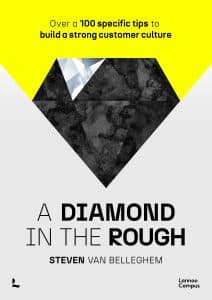Guest Comment by Prof Steven van Belleghem
John Lewis, the CEO of the United Nations Federal Credit Union, once told me “My biggest concern is currently changing every 12 hours.” When you think about all that has come our way in the past 24 months, it is almost unbelievable.
The Covid crisis, logistical problems, price hikes, energy crisis, war in Ukraine, inflation, pressure on purchasing power … every month a new challenge has landed on the plates of managers and customers alike. In fact, there is a very strong argument that the world may never be as stable or predictable as it was for previous generations, and we now need to understand the behaviour of the ‘Never Normal’ customer.
So what do we know about the evolution in thinking in this new wave of customers?
They may hold increasingly extreme opinions: Nuance is increasingly less common in public debates. When faced with increasingly extreme opinions and a polarised world, one positive difference you can make to customers is by encouraging positivity through your leadership, your company culture and your communications.
This doesn’t mean you should live in denial of anything negative, but in times of uncertainty, people are naturally drawn to feel-good stories with predictable endings – just look at the glowing reviews for the Top Gun II movie.
They may be very concerned about society;:The climate is now a topic of conversation in every family. Concerns are growing for myriad other worries beyond the climate such as inequality, poverty, education, etc. This behavioural trend just confirms the importance of the social contributions an organisation makes within its customer strategy.
What is interesting is that AI and other technologies are most effective when used in combination with strong human attributes
As a Director of Finance, you can play an important role in your circle of influence – within your company, your industry and the wider world. Ask yourself how you can add value to society in a focused way, while remaining as true to your company’s core objectives as possible. This circle of influence includes your internal and external stakeholders and those who may be affected, in both a positive and a negative way, by your company’s products, services, policies and actions.
They may be more open to new technology: Over the past two decades, technologies like the internet and the smartphone have drastically changed the way we ‘customerise’. An openness to the rapid adoption of valuable tech has emerged.
AI and other technologies are high up on the agenda for discussion in many boardrooms around the world, and it is becoming clear that they will play an important part in the relationship between customers and brands.
However, what is interesting is that these technologies are most effective when used in combination with strong human attributes. If you find yourself talking about digital transformation, stop to also think about the human transformation – or the change in skillset you and your team will need to add real value in the intelligence augmented world.
They may be losing interest in traditional jobs: Most companies face the difficulty of finding enough and the right people to maintain their customer experience. Fewer and fewer young people fancy a ‘traditional’ career. Scarcity in the labour market is an ongoing challenge.
The world of work is increasingly transparent, and as a senior leader in your organisation, your own reputation and leadership style can make a big difference in getting the right people on board.
They often want low exit barriers: Customer loyalty has declined. One of the reasons is the ease with which customers can change who delivers their service these days.
Customer loyalty no longer starts with customers, but with companies. Do not ask the question: ‘How can I make the customer more loyal to my company?’. Ask the question: ‘How can my company show loyalty to the customer?’
As marketers, we are entering an era of exciting opportunity. Think back to the rise of Uber
This doesn’t always come easily for large organisations, but focus on making life easy for customers, managing their expectations with transparent communication, solve their problems (even if it means pain for you), treat them as an individual and nurture their positive emotions. If you can follow these steps, you can build a connected community of customers stronger than any loyalty scheme.
The truth is that the stream of societal shocks combined with the characteristics of the Never Normal customer create interesting new opportunities. History has showed that changes in consumer behaviour have often been the key driver behind some of the world’s most successful new businesses, and ultimately, a threat is usually just an opportunity that you have not responded to or have been too slow to respond to.
With this perspective as marketers, we are entering an era of exciting opportunity. Think back to the rise of Uber. The company was the first to address the frustration felt by millions of taxi customers around the world by exploiting several existing technologies. Many new financial services emerged in the wake of the 2008 financial crisis. Even the chocolate spread brand Nutella was born out of a global scarcity of chocolate at the end of World War II. Ferrero, based at that time in the Piedmont region of northern Italy, turned this problem into an opportunity. They used hazelnuts, sugar and a little chocolate to create a chocolate paste they named Nutella.
Changes in the market always create opportunities. You just need to think about how customer behaviours and expectations change, spot what it means for you and take action.
Prof. Steven van Belleghem is an author, keynote speaker and expert in customer experience. His new book, A Diamond in the Rough, is published by Lannoo Campus





